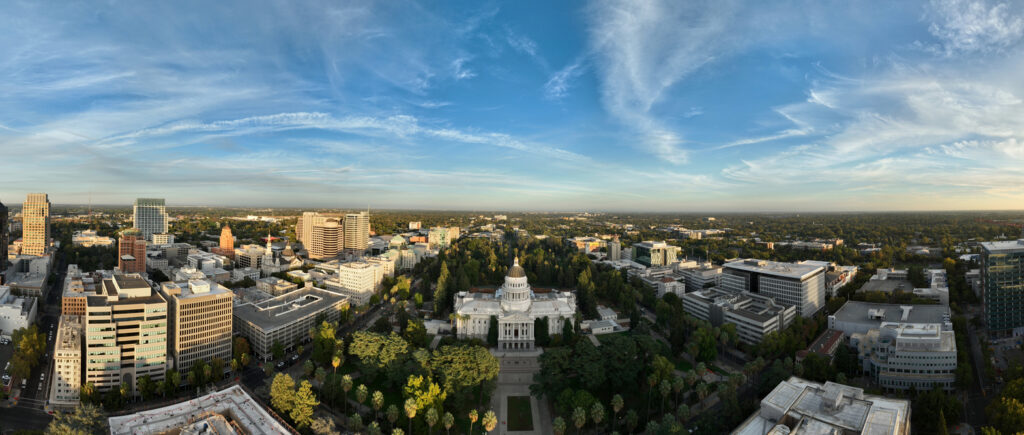What’s Changing for Local Owners Right Now?
Renewal quotes arriving this spring show 10 – 20 % premium jumps for many apartment, retail-strip, and warehouse owners in and around Sacramento.
Buildings that border the American River Parkway or other grassland corridors now flagged “very-high fire hazard” face the steepest increases, along with higher deductibles and new wildfire surcharges.
Why Are Premiums Climbing So Fast?
- Wildfire losses ripple statewide. January 2025 Palisades and Eaton fires near Los Angeles produced an estimated $25 – 40 billion in insured claims, shrinking carrier surplus across California.
- Re-insurance costs surged. Global reinsurers raised catastrophe rates about 25 % at 1-January renewals, and carriers are passing those costs through to policyholders.
- Construction inflation remains sticky. Northern California labor and materials prices are up roughly 4 – 5 % year-over-year, pushing replacement-cost values—and therefore premiums—higher.
- Capacity flight. Several national insurers have paused new commercial property business in California’s higher fire-risk ZIP codes, leaving fewer quotes and less competition.
Who Is Hit the Hardest?
Small-to-mid-size owners (five buildings or fewer) feel the squeeze most—they have less leverage when negotiating terms.
Mixed-use properties with restaurants or grocery tenants pay extra loadings for grease-fire and refrigeration claims.
Where Are Insurers Tightening Terms?
- Wildfire deductibles of $50,000+ are becoming standard inside Fire-Hazard Severity Zones.
- Roofs older than 15 years often lose replacement-cost coverage unless owners show a signed reroof contract.
- Many surplus-line policies now cap non-weather water damage to $100,000 on older multifamily stock.

When Might Prices Level Off?
Market analysts do not expect meaningful relief until the second half of 2026.
Carriers first need to rebuild surplus and recoup 2024-25 wildfire payouts.
How Can Sacramento Owners Control Costs in 2025?
- Document upgrades. Class A roofs, NFPA-13 sprinklers, and 24/7 monitored alarms can earn 5 – 10 % credits.
- Raise deductibles strategically. Moving from a \$5 k to \$25 k all-peril deductible often trims 6 – 10 % off the premium—run the numbers against your loss history.
- Bundle buildings. Rolling multiple locations into a master schedule spreads risk and attracts surplus-line carriers with broader appetite.
- Leverage the FAIR Plan expansion. An April 2025 order raised commercial limits to $20 million per building / $100 million per location; it can backstop hard-to-place risks.
- Create a wildfire action plan. Clear 100 ft of brush, install ember-resistant vents, and join your local Fire Safe Council—some carriers now require written plans before binding.
Bottom Line
2025 is expensive for Sacramento commercial-property owners, but proactive risk reduction and early shopping can blunt the impact.
Start renewals at least 120 days out and consider working with a specialist who can combine standard, surplus-line, and FAIR Plan options.
Outbound Links & Sources
- Milliman – Los Angeles Wildfire Loss Estimate (Mar 2025)
- CA Department of Insurance – FAIR Plan Commercial Limits Order (Apr 2025)
- Insurance Journal – Re-insurance Rate Outlook (Mar 2025)
- Construction Analytics – Construction Inflation Forecast 2025
- MarketWatch – Rising Insurance Costs for CRE (Oct 2024)
- LandesBlosch – California Commercial-Property Insurance Guide (Jan 2025)





